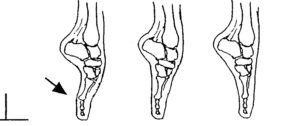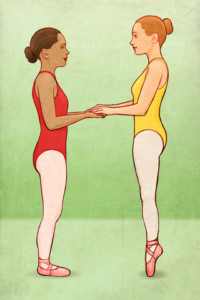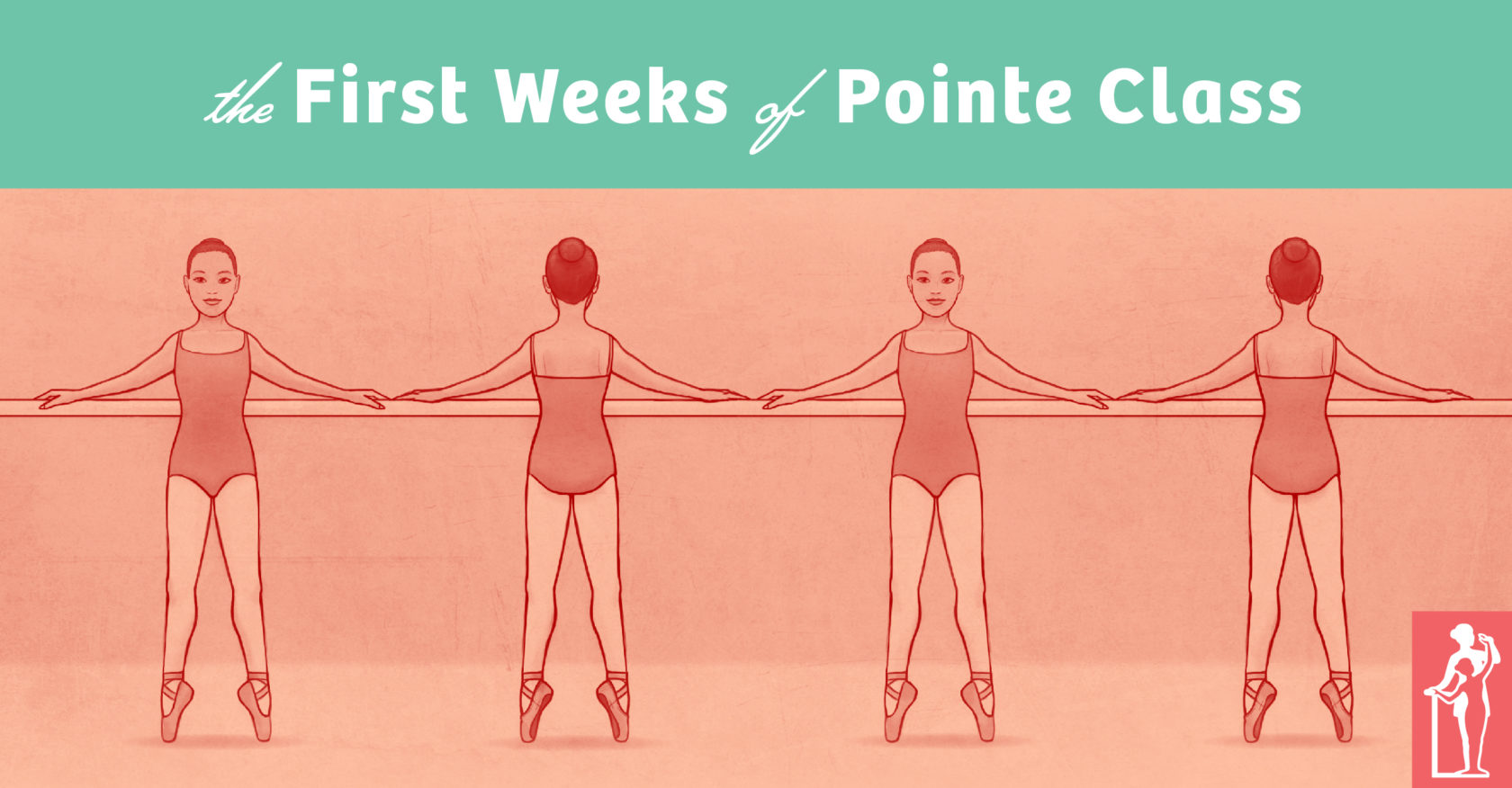 Many teachers will be ushering their students into the first few weeks of pointe training this upcoming season. For many students, it is a very exciting time of choosing the right shoes, preparing their feet for the challenges ahead, sewing ribbons and elastic, and dealing with the emotional high that comes with their first experiences in pointe shoes. Packed with helpful hints and guidelines, this week’s blog gives a great overall picture of how to structure the first classes, how to deal with absences, giving proper initial training at the barre and having the proper attitude as brand new pointe students.
Many teachers will be ushering their students into the first few weeks of pointe training this upcoming season. For many students, it is a very exciting time of choosing the right shoes, preparing their feet for the challenges ahead, sewing ribbons and elastic, and dealing with the emotional high that comes with their first experiences in pointe shoes. Packed with helpful hints and guidelines, this week’s blog gives a great overall picture of how to structure the first classes, how to deal with absences, giving proper initial training at the barre and having the proper attitude as brand new pointe students.
Ease Them Into Pointe Class
At the very least, two ballet lessons per week should be taken by students expecting to take pointe, preferably not on successive days. The first weekly lesson is a normal ballet class with no pointe work, more allegro, and some grand allegro. The second class has the allegro shortened by the amount of time taken up with pointe and demi pointe. Port de Bras and Adagio sections are not shortened. This class structure allows the students’ feet to have the proper amount of rest in between pointe sessions and also allows the student to continue to improve ballet technique and artistry. They must know that, while pointe is an important part of their training, it does not come at the cost of their fundamental technique base.Dealing With Absences
 A known policy should be established and firmly put into place concerning absences of the students. This is not in place to be overly-strict, but to ensure the proper progression of the students in the first 12 weeks of training to avoid injury.
For example, students missing the first ballet class of the week should not be allowed to wear their pointe shoes in the “pointe class,” but should do all of the pointe work on demi pointe for that week. I suggest keeping an attendance chart for yourself so that you can keep track of their commitment level to the program. For their own good, and for their safety, your pointe students must be diligent in their class attendance.
Download this form here.
A known policy should be established and firmly put into place concerning absences of the students. This is not in place to be overly-strict, but to ensure the proper progression of the students in the first 12 weeks of training to avoid injury.
For example, students missing the first ballet class of the week should not be allowed to wear their pointe shoes in the “pointe class,” but should do all of the pointe work on demi pointe for that week. I suggest keeping an attendance chart for yourself so that you can keep track of their commitment level to the program. For their own good, and for their safety, your pointe students must be diligent in their class attendance.
Download this form here.
Conditioning Must Be Slow
Do not be tempted to go faster, even though they will want to. Stopping before they’ve had enough will contribute to their motivation, in addition to providing the best possible physical improvement. This slow, patient build up of strength in the tiny muscles of the arch and toes really pays off during the second year. You will have stronger, more artistic dancers. Dancers with high arches will need to take longer for the conditioning. Explain that this will make them stronger in the end. They have the extra difficulty of strengthening the metatarsal joint to dorsiflex sufficiently so the weight can be put correctly on perpendicular toes. This takes longer. Explain it to them.Using the Barre
Be sure they put enough weight on the barre to allow the correct weight placement position to occur every time they come up on pointe.
This illustration shows correct bone placement en pointe.
The Students’ Attitude
Pointe students must care enough about their art to dress properly for ballet, in an approved leotard, and clean tights. They must care enough to take the time to fix their hair in a manner compatible with classical ballet. This helps their minds to be centered on their ballet classwork. It helps them to get the feel of a genuine performance. Ballet is a performing art, and the exercises, enchainements and dances done in class should be performed with neat starts and finishes as if an appreciative audience were waiting to applaud. The traditional applause at the end of ballet classes in some schools is for the students, for their performance in class, as well as a courtesy to the teacher. If you do not do this in your school, try it with your next beginning pointe class. Make it a class of “theater arts” from start to finish.Looking Ahead
 Dancers are ready to try an exercise in the center when they are of their own accord no longer putting a portion of their weight on the barre, but are showing good placement, and distributing their weight correctly throughout the body while on pointe.
Idea: For the first excursion into the center, pair them up as “buddies”, one girl providing a “buddy barre” for the other, then trading off on the repeat of the exercise. This helps build confidence, and avoids the stress of the natural fear of falling that occurs when first coming into the center on pointe.
So much careful planning and consideration go into the first delicate weeks of pointe training. These young ladies are eager and ready to learn this fascinating art form, and what a privilege we have to teach them!
Related Articles:
Dancers are ready to try an exercise in the center when they are of their own accord no longer putting a portion of their weight on the barre, but are showing good placement, and distributing their weight correctly throughout the body while on pointe.
Idea: For the first excursion into the center, pair them up as “buddies”, one girl providing a “buddy barre” for the other, then trading off on the repeat of the exercise. This helps build confidence, and avoids the stress of the natural fear of falling that occurs when first coming into the center on pointe.
So much careful planning and consideration go into the first delicate weeks of pointe training. These young ladies are eager and ready to learn this fascinating art form, and what a privilege we have to teach them!
Related Articles:
- Their First Pair of Pointe Shoes
- Conditioning Principles to Improve Pointe Work
- Guidelines for Starting a Student on Pointe
- Weight Placement en Pointe
Information from this article is from “Pointe 1: An Introduction to Pointe Work” by Ruth H. Brinkerhoff, © The Ballet Source, 2016.


Comments
No comments for this post.
Add Comment